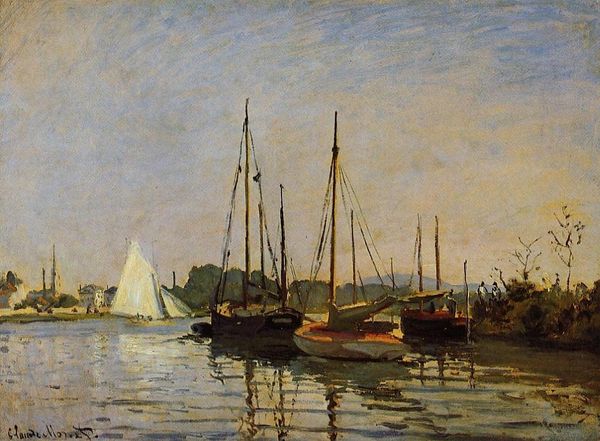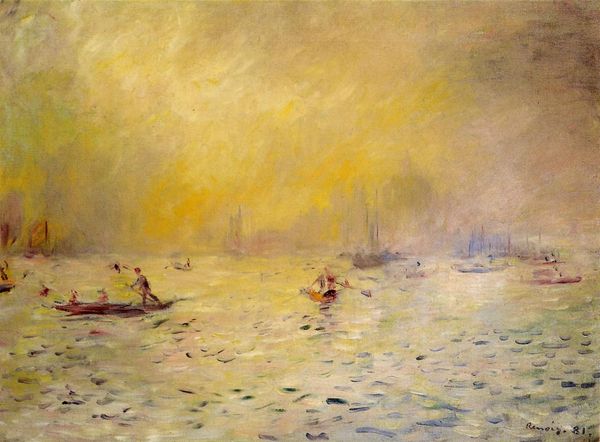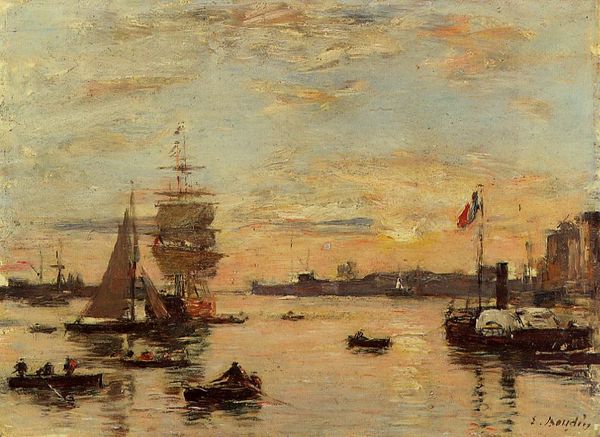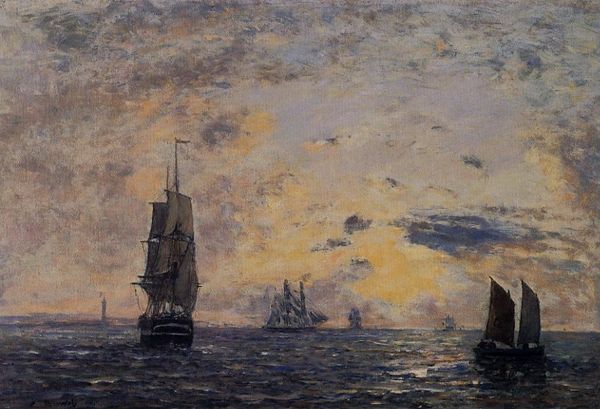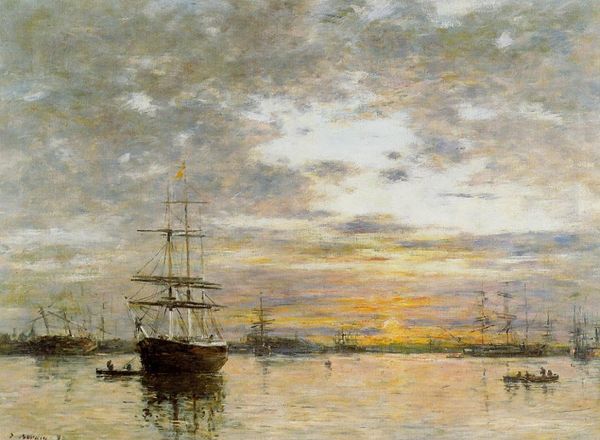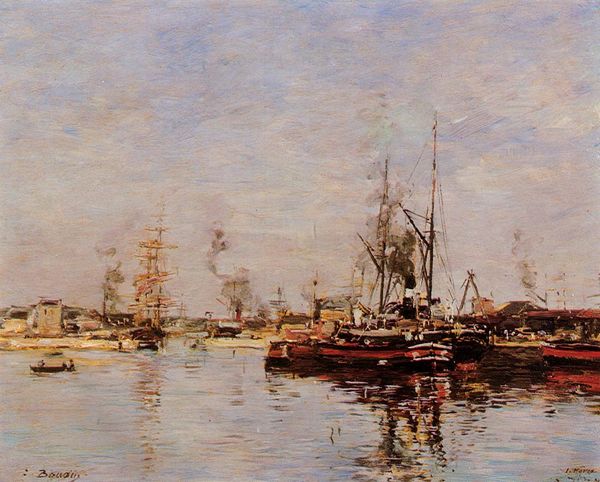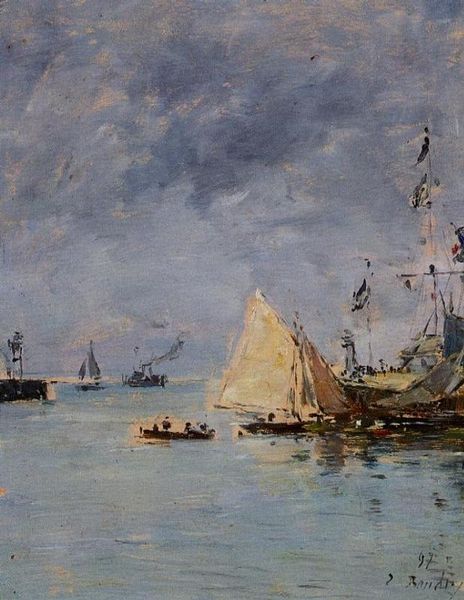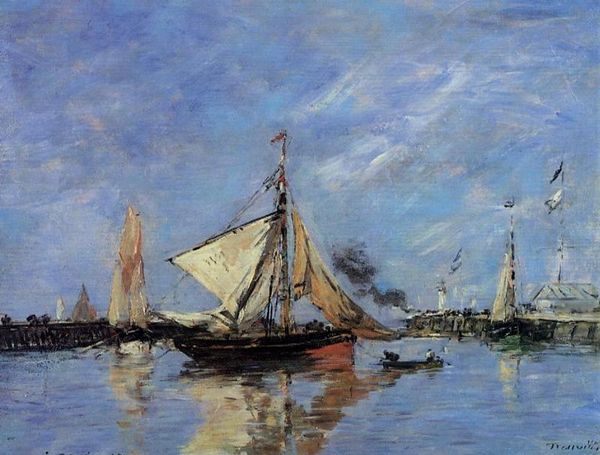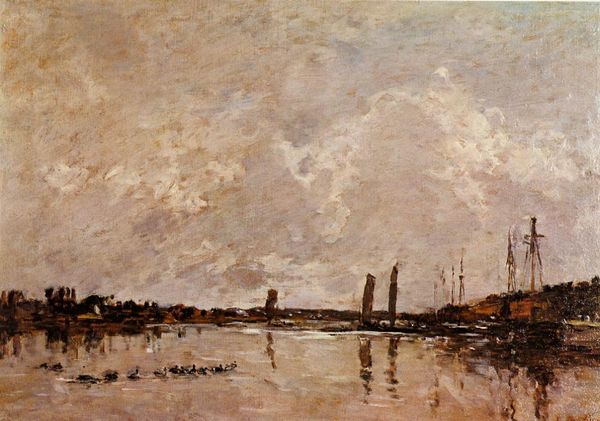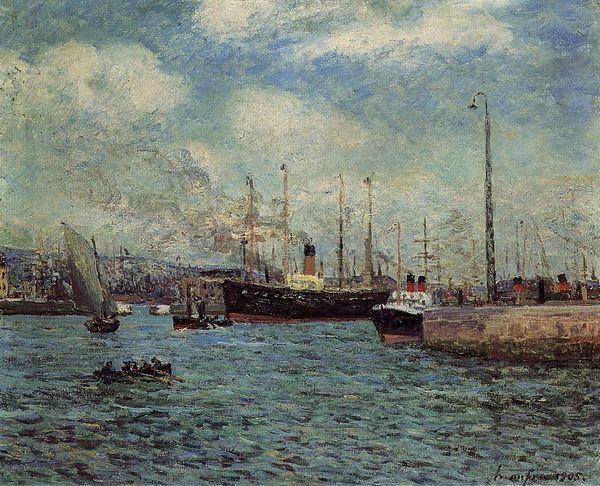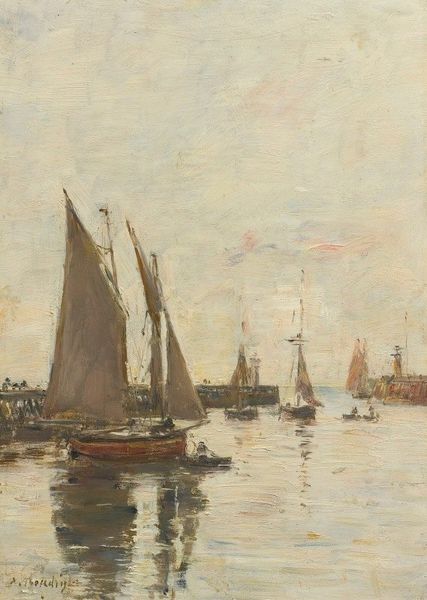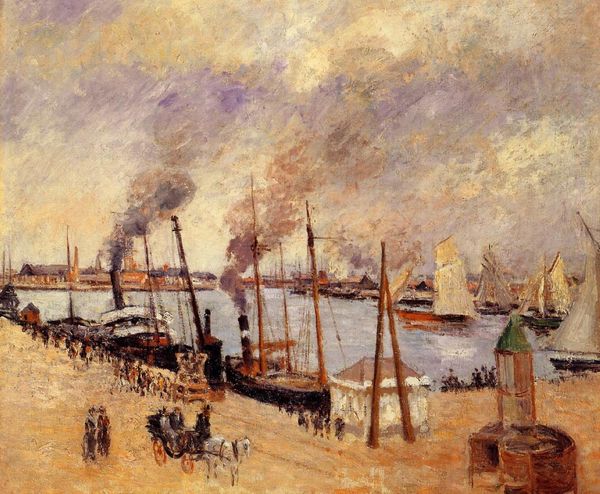
Copyright: Public domain
Editor: So, this is Eugène Boudin's "Le Havre, Avant Port" from 1894, an oil on, I assume, canvas. It's quite atmospheric, almost a pre-photographic record of a specific place and time. What does it say to you? Curator: This painting offers a glimpse into the rapidly changing social landscape of late 19th-century France. Boudin, often considered a precursor to Impressionism, here documents the bustling port life. The deliberate inclusion of working vessels and hints of industrialization places the artwork within the socio-economic context of the period, capturing a moment when traditional maritime activities intersected with emergent industrial power. Do you see how the composition both romanticizes and subtly critiques the period? Editor: I see the romantic aspect, certainly. It's pretty, almost idyllic, but where does the critique come in? Curator: Look at how the light, traditionally associated with beauty and divine presence, is filtered through smoke and industrial haze. The very act of painting en plein air was radical at the time, taking art out of the salon and into the real world. How do you think this accessibility would have affected the public's relationship with art? Editor: It makes art more democratic, accessible. People saw scenes from their own lives, rather than just historical or mythological subjects. Curator: Precisely. And consider the rise of museums and public art galleries during this period. Boudin's work, displayed in these institutions, contributed to shaping a collective cultural identity, reflecting and, to some extent, constructing societal values. Editor: That’s a really interesting perspective, looking at it through the lens of the developing public art scene at that time. It does make the painting seem much more engaged with contemporary issues. Curator: Indeed. By observing a work such as this, we are analyzing visual cues that signal changes within the art world but also greater socio-political transformations in society. It goes beyond the surface of beauty, and offers insights into how institutions were then framing our understanding of French life.
Comments
No comments
Be the first to comment and join the conversation on the ultimate creative platform.
